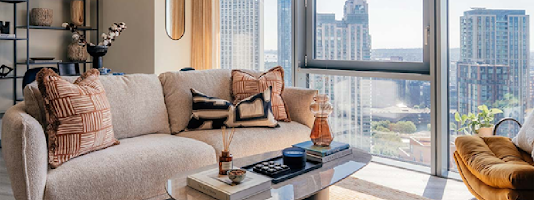Picking the right colors of a house is not only exciting but becomes very difficult at times. The configuration of the colors you put in them will determine the tone of your atmosphere in that particular place. Some choices result in the sensation of discomfort in a room. Meanwhile, the right ones contribute towards making it feel like home. As many as possible of the time are peaceful. But, STYLARC believes that to make the right decision, you'll need to know the basic principles of the concept.
Think About The Functions Of That Space
People should consider the usage of the room when choosing the color they want to use when painting the room. A bedroom is where one rests, so it is better to use soft colors that will not disturb the sleeper. Some colors are light blue, light green, and warm nude shades. Still, a kitchen or a living room can be active. Warm colors like yellow or warm red give out an energy feeling in the room. Many Global Commercial Architectural Design Services believe that the room's functions dictate the choice of colors for the room.
Look For Inspiration Everywhere
There is nothing as special as pulling your color selection from different aspects of life. Ideas can stem from magazines, nature, or even from a particular piece of artwork. The first thing that comes to mind is the selection of the colors that you already like.
If you have any rug or pillow you like most, choose colors of this favorite thing and apply them to the room. According to STYLARC, you can also get color inspiration from home stores within your region. You may also try painting color samples, or you can use an online color swatch and color visualizer for the overall feel of the color in a specific area.
Test Colors In Different Lights
Lighting has an impact on the color perception within your home. Light at home may differ from that of a store, giving a different appearance of a specific paint color. It is also wise to test the chosen color with various lighting conditions since it may look different under daylight or artificial light.
Choose a small portion with one of your walls, paint it, and then try to observe it in the evening and the morning. Natural light will reveal the actual hue of the object, while artificial lighting will make the object appear to have a warmer or more relaxed tone. You should avoid making a hasty decision regarding this change since it will benefit you in the long run if you observe it.
Use The 60-30-10 Rule
The 60-30-10 rule is a common tool used by interior designers to establish a harmonious color palette. This entails allocating 60% of the space to one color, 30% to a secondary color, and 10% to an accent color. For example, you might paint your walls a soft beige (60%), use a deep blue for the furniture (30%), and add bright yellow cushions as the accent (10%). Luxury Project Planning & Management Services use this to ensure your colors work harmoniously together without overwhelming the space.
Conclusion
Choosing the right color palette for interior design doesn’t have to be complicated. Start by considering the room's purpose, look for inspiration, and test colors in different lights. Using neutral bases and the 60-30-10 rule will guide you in creating a balanced space. STYLARC suggests that you should trust your instincts and have fun with the process.





No comments:
Post a Comment